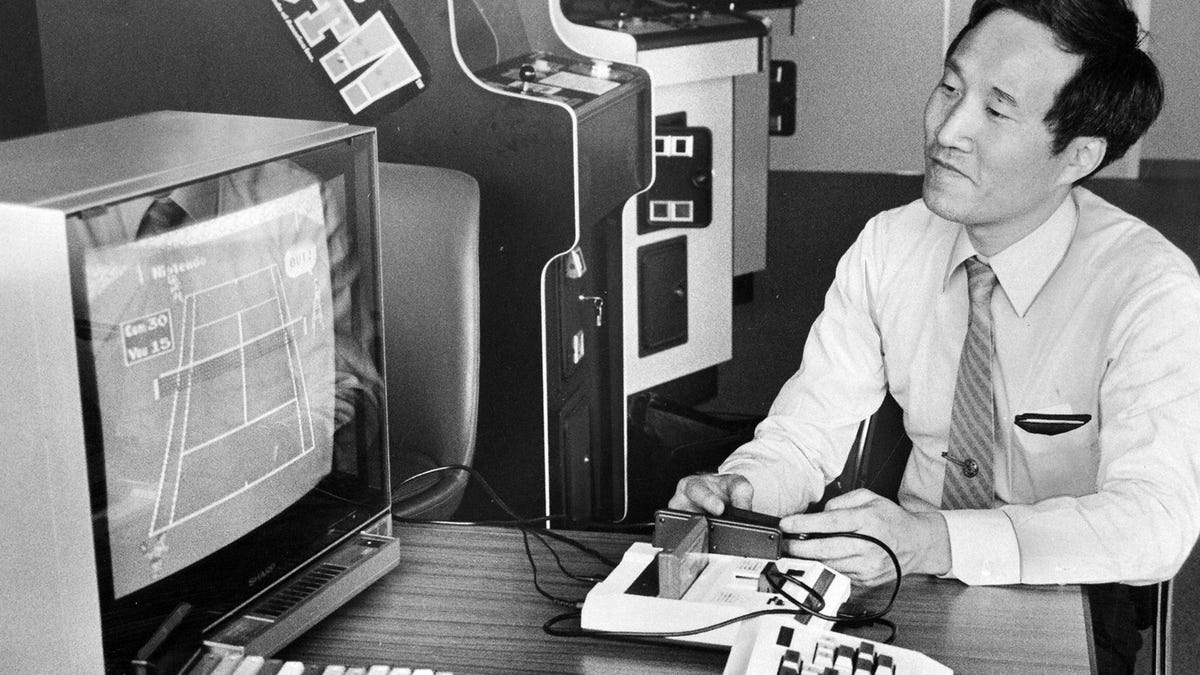
In March of that year I came face-to-face with a true legend: Masayuki Uemura, the engineer who designed Nintendo’s first cartridge-based game system, the Family Computer, aka the Famicom, aka the Nintendo Entertainment System.
As the NES, it revitalized the home video game market in the United States after the Atari market crashed.
Masayuki Uemura joined Nintendo in 1972.
Gunpei Yokoi, the inventor and toy designer whose products like the Ultra Hand had transformed Nintendo from a humble maker of hanafuda, Japanese playing cards, into a well-known toy and game company, recruited Uemura away from his previous employer, the electronics company Hayakawa Electric, known today as Sharp.
Uemura retired from Nintendo in 2004, and currently serves as the director for the Center for Game Studies at Ritsumeikan University in Kyoto.
Departments that teach students how to make video games abound in higher education today, but the Ritsumeikan Center for Game Studies is one of only a handful of academic efforts specifically designed to preserve home video gaming equipment and ephemera.
Kotaku: What was Nintendo like when you joined the company.
Masayuki Uemura: One of the things that surprised me when I moved from Sharp to Nintendo was that, while they didn’t have a development division, they had this kind of development warehouse full of toys, almost all of them American?
Uemura: He loved hanafuda and card games.
Nintendo, as a purveyor of playthings like hanafuda or Western playing cards, originally ranked down at the very bottom.
Kotaku: Did you feel behind the curve compared to other game companies back then.
Uemura: In the 70s, we had no idea what was going on with companies like Namco or Atari because we were here in Kyoto.
If you lived in Tokyo, you’d probably pick up lots of things about companies like Taito or Sega or Namco or even what was happening in America.
But when I started working for Nintendo, that completely stopped.
Yokoi found me and recruited me to Nintendo; he was my senpai.
President Yamauchi told me to make a video game system, one that could play games on cartridges.
Kotaku: Did America’s game industry crash scare you.
Uemura: Japan didn’t really experience a video game industry crash like America did.
What we had was an LCD game crash.
Kotaku: In US the crash made the very concept of games taboo in the industry for a while?
So they didn’t see game systems as things they should carry, either.
That’s why a lot of companies tried positioning their products as educational products, with keyboards, more like PCs than game systems.
The only way to sell a video game was showing it on a screen, and it was a big ask of toy stores, making them purchase TVs.
That was about the time Super Mario Bros.
Uemura: Super Mario Bros.
Until that point, most games followed the arcade style of shooting game design.
Super Mario is often cited as the very first game to connect that style of cute character and cute music together.
Kotaku: After Nintendo went from 3rd or 4th place to 1st in the ‘80s, was there a sense things changed, among people inside the company!
You have to remember, there was a time, after Donkey Kong, that we really didn’t make another game for about two years.
Uemura: There’s a rule in the game industry that fads last for three years.
Until video games became able to portray characters, they were nothing more than strategy games like shogi or chess.